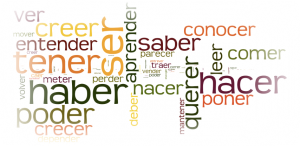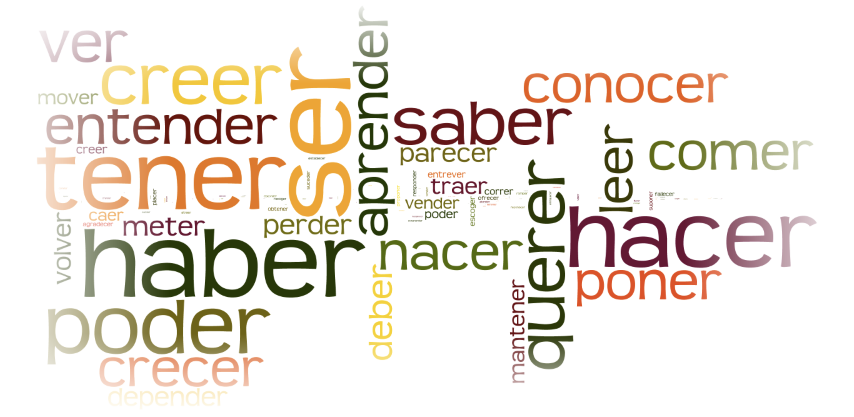 Spanish verbs are like roadblocks.
Spanish verbs are like roadblocks.
You’re cruisin’ down the freeway, carefree with lots of momentum on your side and then, BAM, you hit a roadblock.
I had not yet learned the best ways to learn Spanish when I started my Spanish learning process on Tuesday, July 18th. Granted, today is only Wednesday the 19th, but I must diatribe about the negative verb vibe.
I’ve created a plan and, like any good plan, revisions are already underway. But without the plan (think Iraq-ooops, sorry no politics), I wouldn’t know where my derivations occurred.
As you may have read in the Curse of Humberto, I must avoid anyone who speaks English when I am in Uruguay. But, because I like to enjoy the company of others, I need to able to communicate with them as soon as I am able. I don’t want to arrive in Uruguay with no facility to speak with people. So, my intention is to have passable Spanish upon arrival. This requires pre-study. I will attempt 3 hours of study each day before arrival, which is in about 1 month. This will amount to 90 hours which, hopefully, will get me somewhere.
The plan is as follows:
- Rosetta Stone Spanish CD for 1.5 hours each day.
- Watch 1 hour of Spanish television (with closed captioning on) each day.
- Study vocabulary for ½ hour each day.
That’s the foundation. However, a portion of the plan also included going online and chatting with other folks from Uruguay. Perhaps learn some Spanish and make some friends prior to arrival. So, I did this today and realized I have no idea what the h*** anybody is talking about. (Textbook meet reality-you two have nothing in common.) The on-liners did chat with me until they realized I had less than nothing to offer. I did venture a question:
¿Cualquiera quisiera intercambiar lecciones españolas/inglesas en Skype?.
I used Google’s language website (http://translate.google.com/) to help formulate the question. It means “Would anybody like to exchange Spanish/English lessons on Skype?”
By the non-response, I don’t think my suggestion was met with abundant enthusiasm. And, I kept seeing the word “porn” which leads me to believe that “porn” must be a universal word and that a language exchange would not have been a great priority. I am not giving up on the Uruguayan/Spanish chat idea but I’ll wait until my foundation has the strength to stabilize its first beam.
In trying to learn Spanish quickly, I’m reminded of methods I used both in college and in many years of teaching Microsoft networking classes.
There are two college professors I recollect: one because he taught me an invaluable lesson and the other because he was a homosexual and I had to fend off his “locked-office” advances. One was a priest and the other was a lay man. For the cynics out there, the priest was the good one! We’ll focus on him.
His name was Father Ingebresen. He invited me back to his office after the first week of class (“the first week, what on earth could I have possibly already done?”). And he said this: “Richard, I know you. You’re just like me when I was younger. You’ll get by in this class and do fine without putting in too much effort. And that’s fine but I will not give you higher than a B.”
Hmmmm. Where was this going? Dare I ask what I need to do to get an A? Well, why not? “So, Father…”
“Call me Ed.”
“What do I need to do to get an A?”
The answer, “Memorize 10 poems.”
That’s it? This would be the easiest class I had ever taken. I thought it would be easy, memorizing 10 poems (which had to be 1 page in length), but it proved to be a challenge. Not only did this give me an appreciation for poetry, it also had the side effect of teaching me highly active learning. I realized that your knowledge of any topic is cemented through communication. Not repetition necessarily, but communication. Can you effectively relate to others what you know?
At the end of the class, I had to recite the 10 poems to the whole class and field questions on the content. At the time, I felt that I knew no subject better. I still remember most of these poems to this day.
I used these same techniques when teaching computer networking. If I had to refer to the textbook, I did not know the material well enough. I had to know it so well that I could communicate it to the class without picking up the book. This led to many accolades from the students who complained that “all the other teachers just read to us from the book.”
And so, on this second day of my Spanish learning, I’m reacquainting myself with this idea. If I can’t say it independently, without referring to the textbook or Rosetta Stone lesson, I don’t know it.
For example, this afternoon, I asked myself what I learned from yesterday’s 1 ½ hours with the Rosetta Stone language program. The question yielded little response-I could not recall much. At the time, I felt like I learned a lot, and when I revisited later, I did recollect most of it. However, I did not spend that critical 15 minutes asking myself “what did I learn?” It was passive learning. Time to activate!
So, with that in mind, as I was feeling very positive about my future progress, I hit the roadblock-The Spanish Verb. I was watching a Spanish soap with the closed captioning on and I saw so many words that were not “lookup-able”-they could not be found in the dictionary. Welcome to the world of a Spanish conjugated verb!
Let’s take a word like “ir” which means “to go”. In its present tense, the verb conjugates to “voy”. “Yo voy” means “I go”. Where did the “ir” go? Why is it “ir” in the first place? And if its past tense like “I went”? Then, it’s “yo fui”. Fui? How is one supposed to look up what a word means if it is spelled completely differently in each instance? Is English this difficult?
So, I picked up my book, one in the arsenal of all those learning Spanish, 501 Spanish verbs. They have one verb per page. Yes, one verb, with all of the various conjugations, takes up an entire page. So, to learn one verb, you need to devour a whole page of text. What?
After reading the intro to the book, and a discussion of the 14 verb tenses, I realized that there was a lot of duplicate effort in the book. The second column of each page, every single verb page, contains the seven compound tenses all containing in some form the verb have: “I have eaten” “I had eaten” “I would have eaten”. The word have is like “ir”-it never looks the same. The root is “haber” but used with these verbs it is represented as “he” “has” “ha” “habia” “hube” “habre” to name just a few. I realized that I was seeing these words all over my Spanish soap opera, or, as we in the business call it, a telenovela.
I realized that if you learned how to effectively conjugate the word for to have (“haber”) and the word for is (“estar” and “ser”), you’re well on your way. There is enough consistency among the other verbs to make educated guesses.
I don’t know if this strategy will make the roadblock disappear but at least it will present a detour.
Richard Cummings
Get your copy of his latest book entitled Obvious Conclusions, stories of a Midwestern emigrant influenced and corrupted by many years living in San Francisco and abroad. It just received its first outstanding review "...reminiscent of David Sedaris or Augusten Burroughs" on Amazon UK.
Latest posts by Richard Cummings (see all)
- YouTube TV Review:Is it worth it?Better than cable? - September 29, 2024
- The Google Pixel Fold: Why It’s the Star of Google I/O 2023 - May 9, 2023
- Book Review:Malibu Rising by Taylor Jenkins Reid - March 6, 2022

